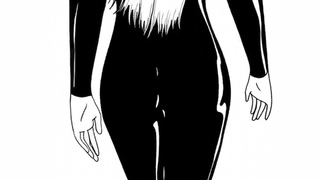The On Bight Redirect Refined
.
The On Bight Redirect Refined
Prepare to use your pause button.
Much of this is in response to previous questions, THANKS FOR THE FEED BACK!
Notes used to make this video below.
On Bight Redirect using only a carabiner
On Bight Redirect with cambium saver and constricted branch union.
On Bight Redirect using cambium saver and pulley for ascent if needed.
Use of a remotely removable ring (credits to Dan Curtis)
On Bight Redirect. Named such because the actual redirect is done ON A BIGHT of your climbing line.
This is a remotely retrievable redirect that will pass for life support. It has no slip knots, clips or pull line type releases.
It can be used with either a canopy or base anchor on a single line to assist a climber in safely moving about the tree.
It works well for redirects of 20 feet or less, set one at a time, so as not to allow numerous redirects to accumulate and become difficult to remove from the tree or stringing yards of line around the tree. It is kind of like cleaning up after yourself. It can save you from having to climb thru a crotch or disconnecting your system to pass it over a branch union.
It is ideal for example, when used for a short descent to a lower limb and a walk back to the trunk or short movements from limb to limb. A regular redirect can be used first to access a particular part of the tree, followed by numerous On Bight redirects for a clean canopy access.
It requires three times the length of a single rope.
It uses the middle of your climbing line leaving the end available if needed.
I will demonstrate several configurations that may be used, highlighting strengths and weaknesses and addressing certain concerns.
The first and fastest is the Natural Crotch On Bight redirect that only requires a carabiner. It is made by taking a bight of your climbing line ABOVE your multisender and looping it over the branch union back to your harness and connecting it with a carabiner. Up to one-third of your weight will continue to be supported by your original support point while 2/3 will be on the redirect. Using only a carabiner will lessen the friction on the tree structure while adding a pulley may make it easier to return if needed. If it is a very tight branch union or there are concerns for the tree or rope on rope friction, a midline attachable leather cambium saver is the solution. Advantages to this approach are that it is quick and takes minimal equipment to configure and continues to share a partial load with your original anchor. It should only be used on secure anchors as a fall could be up to three times the distance from this redirect.
Friction is minimized at the limb by using only a carabiner, adding a pulley makes ascending easier but increases friction on the limb.
(Demo natural and leather, show support, show no anchor.
Notice the anchor is dynamic and still shares the load. If the anchor is removed, all three lengths of the rope will be slack.
Much easier than an adjustable ring to ring friction saver and retrieval ball, although I still find that useful for cinching on a vertical spar or limb.






















![Stromae, Pomme - “Ma Meilleure Ennemie” (from Arcane Season 2) [Official Music Video]](https://sun9-52.userapi.com/vzqeMX4QVq0O5WwnmycjKSLi5AUvVutZJqE4uw/zw1HrPEjbkc.jpg)
